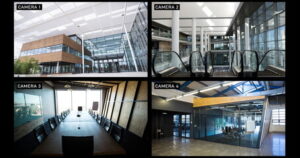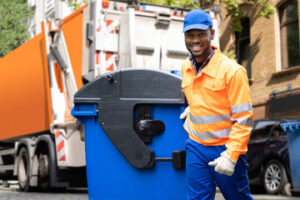License plate recognition (LPR) is a security camera system that the software can direct to focus on and record vehicles. Unlike other security cameras, they do not function independently and are primarily used in conjunction with other devices.

License Plate Recognition Camera uses infrared illuminators and ambient light to record the numbers and letters on a vehicle’s license plate. Some models also feature full-color night vision.
In its simplest form, license plate recognition (LPR) technology scans vehicles with cameras that capture their image and read the characters on the plate. The captured images are then sent to a server where they are processed and stored, often in combination with GPS coordinates and other information from the camera. Often, this data is used to log traffic violations or speeding fines, provide parking assistance in public buildings such as hospitals and museums, facilitate electronic toll collection, or act as a crime deterrent.
To capture a usable image, the camera must be in a position to see and focus on a vehicle’s entire front face. The camera should also be capable of delivering a high contrast black and white image in low light conditions. To achieve this, the camera may use an infrared illuminator to help illuminate the vehicles’ number plates. Typically, these illuminators are mounted next to the camera, but they can be turned on only when the camera is activated. This can be done automatically or manually, depending on the camera model.
The resulting data is typically stored for a certain period of time or forever and can be used in a variety of ways. It can be compared against databases such as “wanted person”, “protection order”, missing person, gang member, known and suspected terrorist, supervised release, or immigration violator lists to identify suspects, and it can be used to track individuals’ movements.
Some LPR systems allow the system operator to select a certain area in the image that is to be recognized by the camera and send this selection to the camera software, which then uses its specialized OCR routines to translate this particular section of the license plate into digital numbers and letters. This is where the magic occurs, transforming a visual into usable data.
The OCR routines that the ANPR software uses must be “taught” to recognize different typefaces, character variations (what may appear as an O in one region could be seen as an I in another), and plate designs that are subject to many regional modifications. This is a complex task that requires a significant amount of computer power and memory.
Recognition of Vehicles
When a vehicle passes a license plate recognition camera, the device automatically captures and transmits a digital image of its front and back plates. It also collects other important data such as the date and time, as well as the make and model of the vehicle. Some systems are even capable of capturing vehicle speed and direction.
This type of information is valuable to a wide range of applications including traffic management, law enforcement and commercial security. The data can be used to identify vehicles that have been reported as stolen or are known to be involved in criminal activity. This can help to prevent crime before it occurs.
To be successful, LPR cameras must be able to accurately capture the license plate and read the characters on it. This requires specialized algorithms that can distinguish different font styles and recognize each of the letter and number characters on a license plate. In addition, it must be able to recognize regional modifications to license plates that differ in size and format.
There are a number of factors that can affect the ability to effectively use an automatic license plate reader (ALPR). These include varying ambient lighting, headlight glare and environmental conditions. Dedicated LPR cameras are typically designed to overcome these challenges using techniques like infrared illumination and high shutter speeds.
Despite the many benefits of this technology, it is not without its critics. There have been instances where police agencies have abused this technology, targeting minority communities and ignoring constitutional protections. Those critical of the technology have also expressed concern that it could be used to target terrorists and other violent individuals.
For these reasons, it is essential to carefully consider your specific needs before deciding on an automatic license plate recognition system. An experienced supplier will provide you with detailed information about the capabilities of each system, and they will work with you to determine which option is best for your particular application.
If you’re interested in learning more about how a License Plate Recognition Camera can benefit your company, contact the experts at Antaira Technologies today. We offer a wide selection of innovative industrial communication devices that are sure to meet your needs.
Reporting of Vehicles
License plate recognition technology has long been useful for law enforcement agencies and other public sector operations, but private businesses are starting to use it as well. Parking garages, toll booths, and curbside pickup services all benefit from the ability to capture images of vehicles and record their license plate numbers. Homeowners associations and gated communities can also use it to keep tabs on what vehicles enter and leave the property.
The technology works by capturing photographic video or still images of vehicles and transforming the optical data into digital information in real time. It then identifies and catalogues that information for future reference. The software and algorithms that allow for a camera to recognize license plates are highly specialized. The system can distinguish between letters and numbers, as well as read different fonts and color combinations. The process begins by normalizing the image for brightness and contrast, then separating the characters from their background. After that, the characters are segmented and processed for OCR (optical character recognition).
These steps are performed in a fraction of a second, meaning they can cope with fast-moving traffic. They can even produce usable images at speeds of up to 120 mph.
When a vehicle is recognized, it’s logged in an electronic database and associated with a vehicle description, date and time, and a GPS location. This enables police officers to track and identify vehicles, especially those with a known gang affiliation or criminal history. The cameras can even be used to retrace the route of a stolen car.
A license plate recognition camera can be mounted on a patrol vehicle or fixed in a stationary location. It can be set up to monitor a highway, parking lot, or gated community and can be programmed to alert the police to specific vehicles as they pass by. This enables police to quickly respond to incidents and catch criminals who might otherwise escape detection. Police agencies can also add a vehicle to a “hot list” and monitor it in the field to prevent the driver from fleeing the scene of a crime or being involved in another one.
Tracking of Vehicles
While the initial image capture is important, the localization process that identifies a license plate from among other objects in the frame is equally crucial. This involves determining the exact location of the license plate within the image so that the number can be accurately reported to the database (for example, the city, state, and tag information).
The best locations for LPR cameras are in choke points that are frequented by vehicles and are likely to have a specific destination, such as a parking lot entrance or exit, an alleyway, or even a street. Ideally, the camera should be positioned so that it can clearly read both the front and rear license plates of vehicles.
In order for an LPR system to work well, vehicles need to come to a stop or at least slow down when they approach the camera. This is because the more time that a vehicle spends in one spot, the better it will be for the camera to take clear photos of the plate.
Another key factor in getting a good photo of a license plate is the angle that it is shot at. The optimal angle for an LPR camera is less than 30 degrees from the plate. Any higher and the camera may be obstructed by other objects in the frame, such as car bumpers or SUV contours.
Lastly, the type of camera used for license plate recognition is also important. Typically, ALPR systems use cameras with high resolution and wide dynamic range (WDR), as well as adjustable shutter speed. These factors allow the camera to capture a clear image of the license plate, even in low light conditions.
Some systems can run the captured photos against hot lists of plates that belong to vehicles known to be involved in security or law enforcement matters, such as stolen cars, missing people, and wanted fugitives. This allows police forces to quickly identify and dispatch vehicles that are spotted as suspects in the area, cutting response times significantly.
